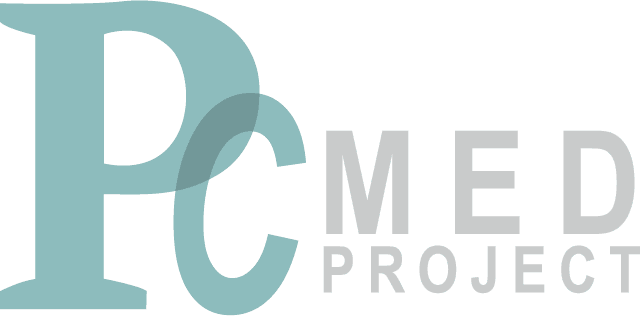
Mammography Guidelines for Average-Risk Women
SUMMARY:
Professional organizations continue to release evidence based guidance on mammography, with ACP the latest to provide updated recommendations. While required frequency and starting age may differ, they all emphasize shared decision making with patients, which entails counseling about uncertainty, risk/benefit and related patient values.
BENEFITS OF MAMMOGRAPHY
- Appears to decrease breast cancer mortality by 15 to 20%
- Studies demonstrate varying magnitude
- ACS (RCT data): Relative risk 0.80 to 0.82
- Recent data from the Canadian National Breast Screening Study did not show decrease when comparing mammography to controls, perhaps due to more recent improvements in treatments but does not take into account advances in imaging
- May increase life expectancy (ACS systematic review) but could not quantitate
HARMS OF MAMMOGRAPHY
False Positives (additional images and benign biopsies)
- USPSTF review
- Collaborative modeling data: Screening biennially from ages 40 to 74 years would result in 1376 false-positive results per 1000 women screened over a lifetime of screening
- ACS review of the same data
- Increased risk of false positive with dense breasts among women 40 to 49
- Callbacks minimized if prior films available
Anxiety and Distress
- May persist even if follow-up is normal
- Financial concerns as patient may be responsible for paying for additional tests
Discomfort
- USPSTF review identified mammography as being a painful procedure
- Follow-up procedures may also result in pain
Overdiagnosis and Overtreatment
- Overdiagnosis is defined as detecting a cancer that would have remained indolent and not become apparent without screening
- Overtreatment is defined as treatment for an overdiagnosed cancer
- Difficult to discern actual number of overdiagnosed cancers
◦ Collaborative modeling data (USPSTF): Screening biennially from ages 40 to 74 years would lead to 14 overdiagnosed cases of breast cancer per 1000 persons screened over the lifetime of screening with a very wide range of estimates (4 to 37 cases) across model - Other organizations such as ACS make the point that certain assumptions may not be verifiable in addition to bias in methodology and design
Diversity, Equity Inclusion Considerations
- USPSTF cites that Black women are 40% more likely to die from breast cancer than Caucasian women with more aggressive cancers at younger ages
- Urgently calling for more research to see if different screening methods are needed for Black women
- ACR updated guidelines to include transgender patients stating “Annual screening at age 40 is recommended for transfeminine (male-to-female) patients who have used hormones for ≥5 years, as well as for transmasculine (female-to-male) patients who have not had mastectomy”
PROFESSIONAL GUIDELINES:
ACOG
- Start Age
- Recommend at age 40
- Screening Interval
- Every 1 or 2 years (shared decision making)
- Stop Age
- Age 75
- > 75 shared decision making including overall health and longevity
USPSTF
- Start Age
- Recommend at 40 years
- Screening Interval: Every 2 years until 74 years
- Stop Age
- ≥ 75 years: Insufficient evidence to recommend for/against
ACS
- Start Age
- Recommend at age 45 years | Consider 40 years if patient desires
- Screening Interval
- 45 to 50 years: annual
- ≥55 years: Every 2 years or can choose annual
- Stop Age
- Continue if good health and life expectancy >10 years
ACR
- Start Age
- Recommend at 40 years
- Screening Interval: Annual
- Stop Age
- “Screening should continue past age 74 without an upper age limit, unless severe comorbidities limit life expectancy or ability to accept treatment.”
ACP
- Start Age
- Recommended at 50 years
- 40 to 49 years: Discuss risks vs benefits and patient preference (“potential harms outweigh the benefits for most women” in this age bracket )
- Screening Interval: Every 2 years
- Stop Age
- Screening not recommended for women ≥75
- Life expectancy ≤10 years
NCCN
- Start Age
- Recommend at 40 years
- Screening Interval: Annual
- Stop Age
- Upper age limit not yet established
- Consider comorbidities that may impact life expectancy (≤10 years)
American Society of Breast Surgeons
- Start Age
- Non-dense breasts (A and B density): 3D preferred modality | Age 40 | No need for supplemental imaging
- Dense breasts (C and D density): 3D preferred modality | Age 40 | Consider supplemental imaging
- Screening Interval
- Annual
- Stop Age
- When life expectancy is <10 years
ADDITIONAL KEY POINTS:
- Clinical Breast Examination (CBE)
- ACOG & NCCN: Offer every 1 to 3 years for women 25 to 39 years and annually for ≥ 40 years
- USPSTF & AAFP: Insufficient evidence to recommend for or against
- ACS, ACP & Canadian Task Force on Preventative Healthcare: Not recommended
- WHO: CBE may be of benefit for women age 50 to 69 years with poor access to healthcare resources
- Most professional organizations find insufficient evidence to recommend adjunctive screening using breast ultrasonography, MRI, Digital Breast Tomosynthesis, or other method in the setting of a normal mammogram and no other risk factors
Learn More – Primary Sources:
ACOG Practice Bulletin 179: Breast Cancer Risk Assessment and Screening in Average-Risk Women
ACOG Clinical Practice Update: Age to Initiate Routine Breast Cancer Screening
Screening for breast cancer: U.S. Preventive Services Task Force recommendation statement
AAFP: Summary of Recommendations for Clinical Preventative Services
NCCN Guidelines: Breast Cancer Screening and Diagnosis
ASBrS: Position Statement on Screening Mammography
WHO position paper on mammography screening
American Cancer Society Recommendations for the Early Detection of Breast Cancer
